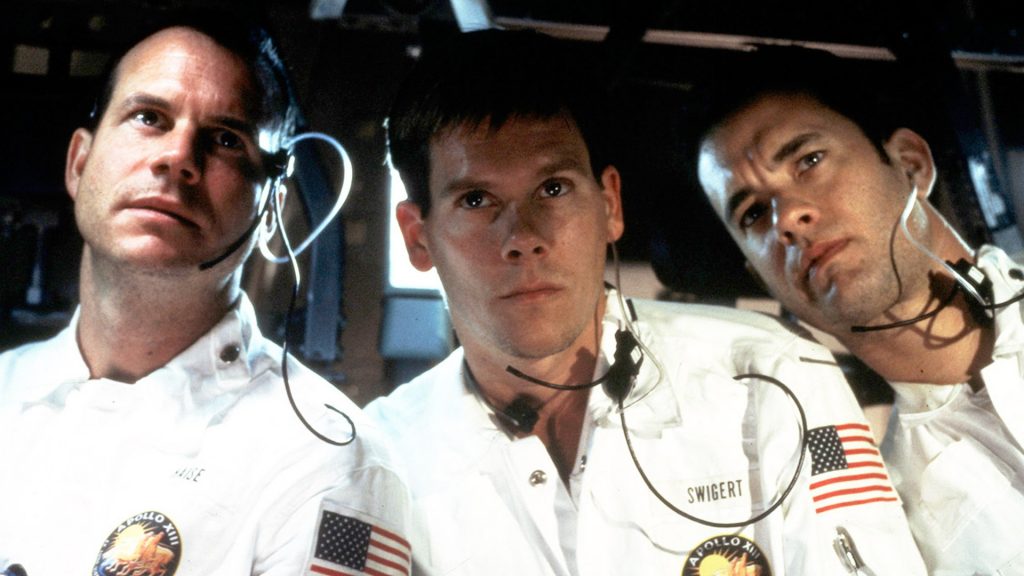
Observers agree that Hollywood depictions of the NASA space program are frequently off the mark when it comes to historical accuracy.
Apollo 13 is an exception. Director Ron Howard’s 1995 account of America’s ill-fated third attempt to reach the moon not only received a Best Picture nomination, but is generally praised for getting things right.
Approximately 56 hours into the April 1970 flight, an electrical malfunction caused the explosion of a Command Module oxygen tank. That signaled the beginning of the most extraordinary rescue mission in the history of human exploration. Would astronauts Jim Lovell, Fred Haise, and Jack Swigert be able to nurse their compromised spacecraft back to Earth?
The movie documents the dangers, tense moments, and entrepreneurial creativity that marked the next four days. The crew members and their NASA support team in Houston were forced to come up with answers to questions no one had ever thought to ask, and to invent novel solutions to life-and-death problems – sometimes with mere minutes to spare.
After a slingshot orbit around the moon – designed to accelerate the craft back towards Earth – technicians discovered that Apollo 13’s trajectory was too shallow. The crew would have to make a mid-course correction.
That would require something never before attempted: a “manual burn” from the Lunar Module (the part of the spacecraft designed to descend to the surface of the moon, which was now serving as a lifeboat for the crew).
But there was a problem. The guidance computers were in the crippled Command Module. How would the astronauts know where to point their spacecraft?
In the movie, while some of the smartest people in the world are trying to figure that out, Commander Jim Lovell asks: “All we need to hold attitude is one fixed point in space, is that not correct?”
Then, as he looks out the LM window toward the Earth, he says, “Well, Houston, we’ve got one.” Their home planet – everything they had ever known – was their fixed point.
Ron Howard chose not to depict the fact that Apollo 13 actually executed three manual burns. Two were oriented toward the sun and one toward the Earth. All of them, to say the least, were exciting. Here’s the movie version, which includes some salty language reflecting the pressure of the moment.
The mission had a happy ending. Apollo 13 returned safely to Earth.
It’s worth noting, however, that the fixed point outside their window was hardly “fixed” in an absolute sense. The Earth travels at 67,000 mph, or 18.5 miles per second, as it revolves around the sun – an extraordinary speed that NASA had to take into account. Does that mean the sun is firmly planted in the cosmos? Hardly. The sun, along with our entire solar system, is hurtling through space at 448,000 mph as it pinwheels around the center of our Milky Way galaxy.
Astrophysicists were startled to learn a few decades ago that nothing in the cosmos is “pinned down.” Everything is in motion.
For that matter, nothing is pinned down in your day-to-day life, either.
Your job is not a fixed point. Corporations don’t last, and entire industries will come and go during your lifetime. Fashions change in a matter of months. Mountains are currently rising and falling, and the continents are interacting with each other in a kind of extreme slow-motion dance.
Pop songs may promise, “I will love you ‘til the end of time,” but even seemingly stable relationships are subject to ongoing change. Author Lew Smedes famously wrote that he had been married to three different women – and all of them were the same person, his wife.
Is there actually anything that doesn’t move?
Jesus thought so. He said, “Heaven and earth will pass away, but my words will never pass away.” (Matthew 24:35)
In a world of perpetual transition, Jesus’ teaching – his words about forgiveness, spiritual accountability, God’s availability, prayer, worry, care for the poor, love of enemies – his words about everything will stand the test of time.
All we need to stay on course is one fixed point – something that won’t change overnight or let us down at the end of life.
Well, Houston, we’ve got one.
We can build our lives on the words of Jesus.
